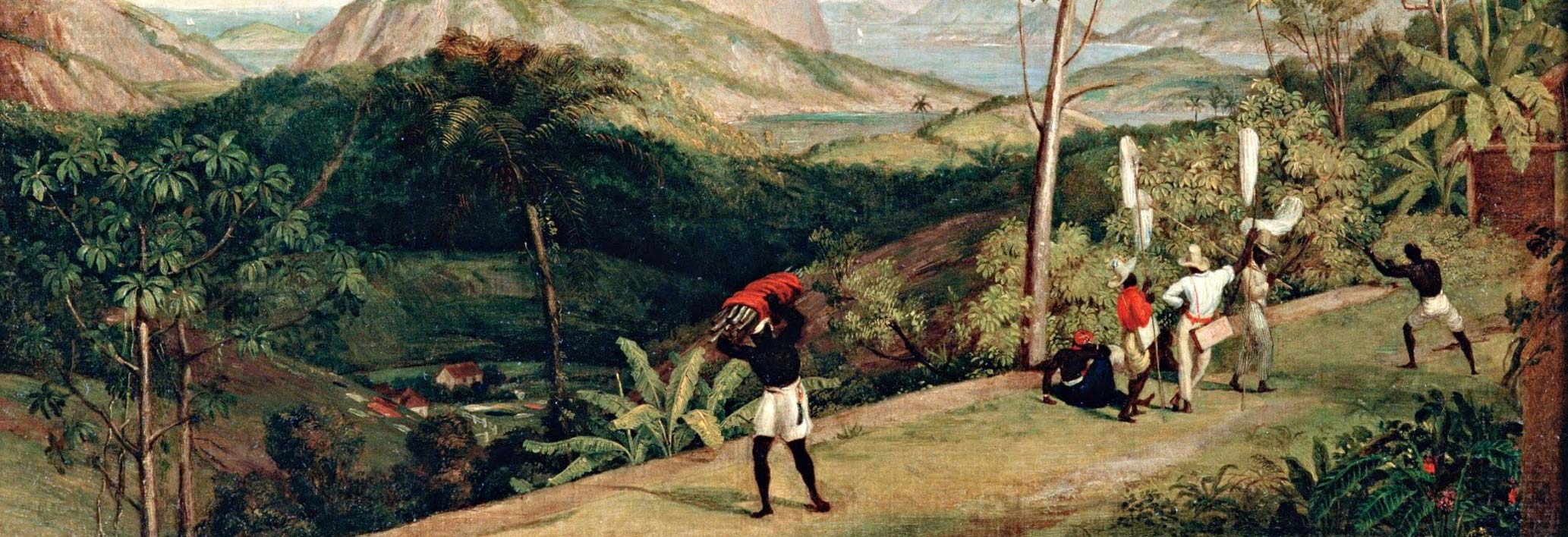Emilia Soares de Patrocinio (fl. nineteenth century), a West African–born small business owner and slaveholder in Rio de Janeiro, Brazil, during the second half of the nineteenth century, was herself likely a manumitted slave. Emilia sold produce from a stall in the city’s main market and also earned income from the wages of her rental slave, who occupied the same position Patrocinio probably did when she first peddled fruits and vegetables. Although little is known about her personal life, and the origins of her surname are unclear, Patrocinio’s business records reflect a common economic history with former slaves who lived in urban Brazil as well as Afro-Brazilian women more generally. Opportunities for social mobility in nineteenth-century Brazil frequently allowed manumitted slaves to become slave owners and unskilled laborers to transition into formal market endeavors that fell under municipal regulations.
The first indication of Patrocinio’s early life as a wage-earning slave, or escrava de ganho, appears in an official registration filed with the municipal government. In 1861 Patrocinio requested the required license for her slave Constancio to peddle throughout the city. The application noted that Emilia was de nação Mina, meaning from the Mina area, or ethnic group, of West Africa. This sole reference to an African past suggests her former legal condition as well as her occupation as a wage earner. First and foremost, there were very few reported cases of Africans who arrived from Mina legally free. Second, street vending often fell under the purview of female slaves. Municipal licenses are one of many sources showing the predominance of black women peddling foodstuffs and miscellaneous wares in urban Brazil. Called quitandeiras, women from Mina dominated in this particular occupation. Finally, Mina women were also known to favor slave owning. Patrocinio likely used her wages earned from peddling to purchase her own freedom and then the freedom of her rental slave.
Working as a quitandeira provided an opportunity for female slaves to self-manumit and build an enduring career as libertas (freed people). Beginning in the streets, quitandeiras established professional and personal networks that helped them reach the ultimate goal of selling from a fixed location. According to the city business directory, Patrocinio achieved this objective as early as 1853. She was listed among the 112 vendors selling from permanent stalls within the Praça do Mercado (Market Square) between 1853 and 1886.
Although the licensing process to occupy a stall demanded additional money and effort, the advantages were numerous. Centrally located, the bustling market fed large portions of the working class. The enclosed structure also fostered business partnerships. Between 1853 and 1858, Patrocinio operated her own business while joining with another quitandeira in a neighboring stall. These additional profits presumably helped Emilia purchase her slave Constancio, whose peddling further expanded her clientele.
Patrocinio’s diversification facilitated a long and fruitful career in the Praça do Mercado. For over thirty years, she sold produce from her stalls, including a third shared venture beginning in 1874.
Despite lacking a complete portrait of Patrocinio’s personal history, her business records present the possibility to trace social mobility among Afro-Brazilians by showing her legal journey from enslavement to freedom to slave ownership as well as her professional journey from unskilled vendor to successful capitalist.
Read the full, original biography by Kari E. Zimmerman in the The Dictionary of Caribbean and Afro-Latin American Biography.Online Resources
The Brazilian Report. “Slavery in Brazil.” Wilson Center, 13 May 2020, https://www.wilsoncenter.org/blog-post/slavery-brazil.
Bibliography
Arquivo Geral da Cidade do Rio de Janeiro. Fundo Escravidão e Escravos de Ganho, Cod. 6.1.53, 1861.
Frank, Zephyr L. Dutra’s World: Wealth and Family in Nineteenth-Century Rio de Janeiro. Albuquerque: University of New Mexico Press, 2004.
Karasch, Mary. Slave Life in Rio de Janeiro, 1808–1850. Princeton, N.J.: Princeton University Press, 1987.
Author
Kari E. Zimmerman
Adapted by
Jennifer Mojica Santana
Contributing Institutions
Hutchins Center for African & African American Research, Harvard University, Cambridge, MA.
Oxford University Press (USA) African American Studies Center





